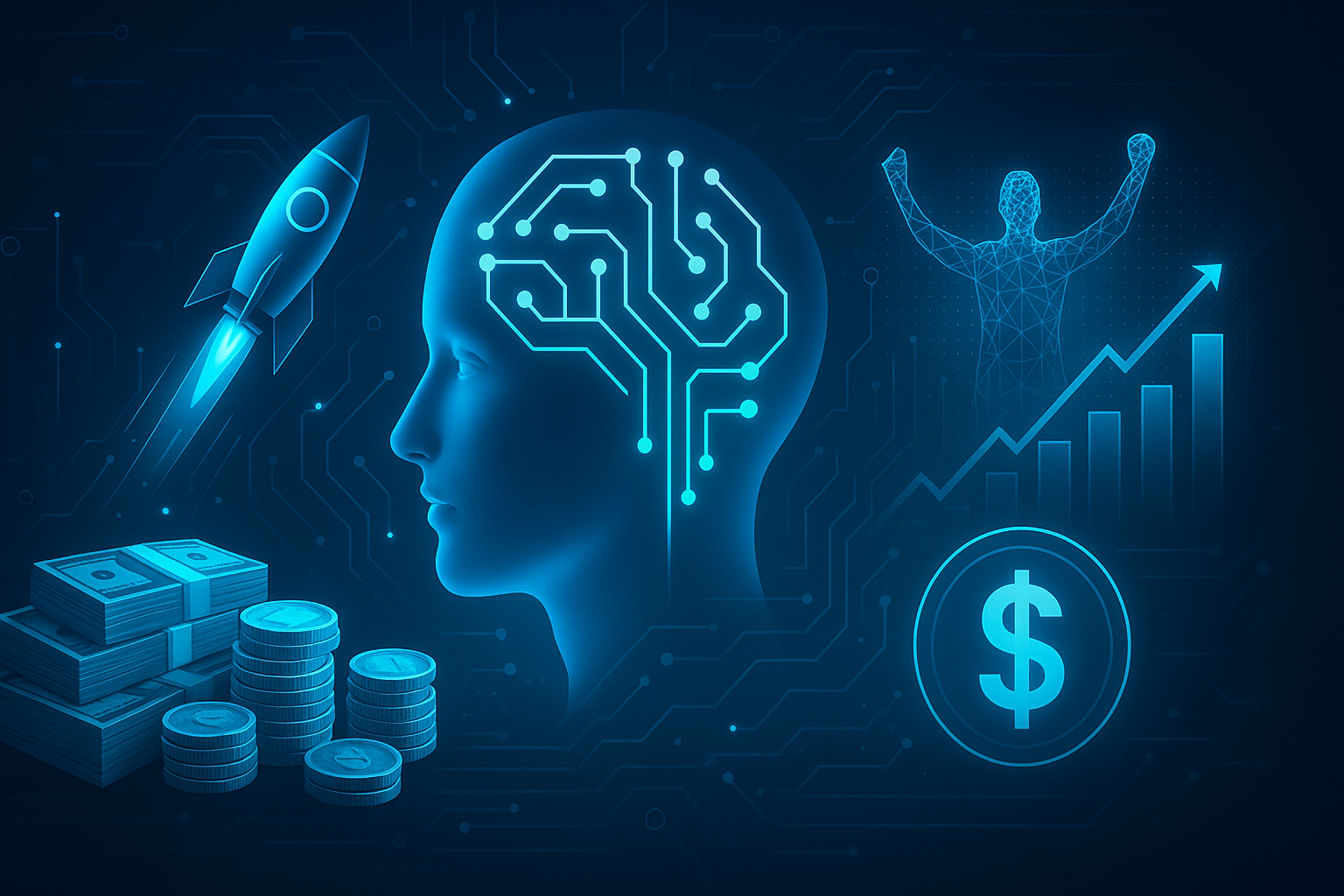Python & ML Bootcamp: Code Your Way to Millions
Escape the Matrix or Stay a Slave. Python and Machine Learning are your weapons to crush the 9-to-5, land high-paying gigs, and build systems that make bank.
Ready to start learning?
Sign in or create an account to enroll in this course.
One-time payment

About This Course
What You’ll Own:
- Python Power: Smash variables, loops, functions, and libraries to build unstoppable code.
- Data Mastery: Clean, scale, and transform data to fuel money-making ML models.
- ML Domination: Create regression and classification models that predict profits and solve real problems.
- Elite Skills: Conquer clustering, dimensionality reduction, and ensemble learning for next-level wins.
- Killer Projects: Build systems like price predictors and customer segmenters that clients beg for.
What You’ll Gain:
- Clients: Solve business problems for entrepreneurs, startups, or corporations with your ML projects.
- High-Paying Jobs: Land $80K+ data science or developer roles with your portfolio.
- Business Growth: Skyrocket your startups or side hustle with analytics that drive sales.
Who Needs This?
- Beginners with Guts: No skills? No excuses. Start now, win big.
- Professionals and Analysts: Level up to score six-figure gigs or promotions.
- Entrepreneurs and Startups: Build tools to crush competitors and scale fast.
No experience needed. Just hunger to dominate.
Why You Can’t Wait:
- No BS: Hard-hitting lessons, no fluff, built for real results.
- Profit-Driven: Code projects that get you clients—price predictors, fraud detectors, more.
- Elite Tools: Python and ML, the backbone of million-dollar industries.
- Forever Access: Learn fast, earn forever with lifetime updates.
Miss This, Lose Everything: Without Python and ML, you’re stuck in the matrix while others cash in. Master these skills to land clients, score high-paying jobs, or build your empire. Enroll now—or regret it when you’re still broke.
Buy Now. Win Big. Don’t Stay Trapped.
Course Curriculum
Introduction to Python
Students will understand what Python is, its applications, and how to set up their environment. They will write their first Python program and follow best practices for clean code.
Python Overview and Applications
Installing Python and Setting Up Your Environment
Writing Your First Python Program and Understanding Syntax
Adding Comments and Writing Clean Code
Python Variables and Assignments
Students will learn to declare, assign, and manipulate variables effectively, including assigning multiple values at once.
Understanding Variables and Assignments
Assigning Multiple Values to Variables
Python Data Types
Students will confidently work with Python’s core data types, including numbers, strings, and booleans, and understand how to use string formatting and methods.
Overview of Python Data Types
Working with Numbers in Python
Strings: Slicing, Modifying, and Concatenating
String Formatting, Escape Characters, and String Methods
Python Booleans and Logical Values
Python Operators
Python Collections
Students will gain proficiency in using Python’s powerful collection types: Lists, Tuples, Sets, and Dictionaries, to store and organize data efficiently.
Introduction to Python Lists
Working with Tuples in Python
Sets: Unique and Unordered Data Collections
Managing Dictionaries in Python
Control Flow in Python
Students will write dynamic programs using conditional statements, loops, and control flow techniques for efficient problem-solving.
If, Else, and Elif: Conditional Logic
While Loops in Python
For Loops for Iteration
Python Functions
Students will create reusable code by writing functions, including lambda functions, to improve code efficiency and modularity.
Introduction to Python Functions
Working with Lambda Functions
Advanced Python Concepts
Students will explore advanced topics like arrays, object-oriented programming, and inheritance. They will also understand iterators, polymorphism, and variable scope.
Python Arrays: Basics and Usage
Classes and Objects in Python
Understanding Inheritance in Python
Iterators for Managing Data
Python Polymorphism: Reusing Code
Python Scope: Local and Global Variables
Python Libraries and Utilities
Students will utilize Python libraries and tools like Math, JSON, and Regular Expressions, while managing packages with PIP to streamline coding tasks.
Working with Modules in Python
Managing Dates and Times in Python
Performing Mathematical Operations with Python Math
Using JSON for Data Management
Simplifying Tasks with Regular Expressions (RegEx)
Managing Packages with PIP
Handling Errors and User Interaction
Students will handle errors gracefully, take user input, format output dynamically, and perform file handling operations like reading, writing, and deleting files.
Handling Errors with Try and Except
Taking User Input in Python
String Formatting Techniques
File Handling in Python: Read, Write, and Delete
Introduction to Machine Learning
Learn the basics of machine learning, its types, key concepts, and pipeline to understand how ML solves real-world problems.
Overview
What is Machine Learning?
Types of Machine Learning
Machine Learning Pipeline
Key Concepts: Features, Labels, Training, and Testing
Tools and Libraries for Machine Learning in Python
New Lecture
Data Preprocessing
Clean and preprocess data, scale features, encode categories, split datasets, and prepare data for machine learning models.
Exploratory Data Analysis
Data Cleaning. Handling missing data
Data Cleaning. Removing duplicates and fixing inconsistencies
Feature Scaling
Data Transformation and Encoding
Splitting Data: Train/Test Split
Practical Implementation
Supervised Learning - Regression
Build, train, and evaluate regression models like Linear, Polynomial, and Ridge Regression to predict numerical outcomes.
Introduction to Linear Regression
Implementing Linear Regression in Python
Polynomial Regression
Ridge, Lasso, and Elastic Net Regression
Project - Predicting Housing Prices
Supervised Learning - Classification
Create and compare classification models like Logistic Regression, Decision Trees, and SVM to solve real-world classification problems.
Understanding Logistic Regression
Implementing Logistic Regression in Python
Decision Trees
k-Nearest Neighbors (k-NN)
Support Vector Machines (SVM)
Project - Comparing Classification Models
Ensemble Learning
Master ensemble techniques like Random Forest and XGBoost to improve model accuracy and solve complex problems.
Introduction to Ensemble Learning
Random Forest
Gradient Boosting Algorithms
Project - Credit card fraud detection using ensemble methods.
Unsupervised Learning - Clustering
Group data into meaningful clusters using K-Means, Hierarchical Clustering, and DBSCAN for customer segmentation and more.
K-Means Clustering
Hierarchical Clustering
Density-Based Clustering
Project - Customer Segmentation Using Clustering Algorithms
Unsupervised Learning - Dimensionality Reduction
Reduce dataset dimensions using PCA and t-SNE, and visualize high-dimensional data for better insights.
Principal Component Analysis (PCA)
t-SNE (t-Distributed Stochastic Neighbor Embedding)
Autoencoders
Project - Visualizing Wine Data Using PCA and t-SNE
Association Rule Learning
Discover patterns in data using Apriori and FP-Growth algorithms to perform market basket analysis for retail applications.
Introduction to Association Rules - Market Basket Analysis
Apriori Algorithm
FP-Growth Algorithm
Project - Market Basket Analysis for E-commerce Data
Your Instructor
Escape Matrix Academy
Founder and mastermind behind Escape Matrix Academy. From crafting AI-powered tools to launching sta...
Course Details
Related Courses

ML & AI Bootcamp: Build Wealth or Stay Broke
Escape the Matrix or Die Trying. Machine Learning and AI are your weapons to crush the 9-to-5, snag...

Python, ML & AI Bootcamp: Skyrocket to Success or Stay Trapped
Break the Matrix or Stay Caged. Python, Machine Learning, and AI are your arsenal to demolish the 9-...

Mastering Machine Learning: Break the Chains with ML
Escape the Matrix. Own the Future. Machine Learning isn’t just code—it’s your weapon to crush limita...